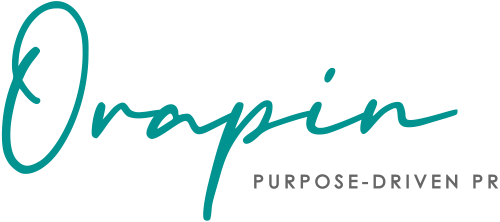
Follow these 10 best practices to get the most out of PR
If you invest in PR, you want to optimize your efforts and results. Sure, you can view PR as a box to check, and many organizations do just that.
Send press releases, check.
Write blog content, check.
Submit byline articles, check.
Apply for awards, check.
Book speaking engagements, check.
But beyond checking boxes, are you getting any bang for your buck? Is the box-checking yielding meaningful results? If you spend time, budget, and headspace on PR, you owe it to yourself to improve your tactical approach.
Go Beyond Checking The PR Box
Truth be told, you can send out a press release every week and never get meaningful coverage in a top, or even bottom-tier outlet. In the fast-paced world of public relations, building and maintaining positive relationships with the media is crucial for success. Don’t just be another faceless PR person blindly sending pitches. Make yourself a valuable asset and partner to the media, someone they want in their proverbial rolodex.
Remember, your purpose-driven organization has a great story to tell. You are working hard to make an impact. Optimize your PR efforts to ensure your target audiences know about all your amazing work!
How do you stand out? How do you become a resource and a partner? Follow these best practices.
10 Tactical Tips For Better Media Relations
1. Research and Target: Before reaching out to the media, take the time to research and identify relevant journalists, bloggers, and influencers who cover topics related to your industry, area of impact, or cause. Tailor your pitches and communications to each individual or outlet, demonstrating that you understand their journalistic focus and the publication’s audience and demographics. Sending a pitch about your organization’s breakthrough in behavioral health research to a tech magazine will fall flat. Know your audience and speak to their interests.
2. Craft Compelling Pitches: A well-crafted pitch is essential for capturing the attention of busy journalists and securing media coverage. Keep your pitches concise, personalized, and newsworthy, highlighting the most compelling aspects of your story or announcement. Use engaging subject lines and hooks to entice journalists to open your emails and learn more. Make sure your pitch meets the criteria for core news values. The new appointee to your board may be a big deal for your organization, but The New York Times does not care.
3. Provide Valuable Resources: Make the journalist’s job easier by providing valuable resources such as high-resolution images, b-roll, background information, and relevant statistics or data. Anticipate their needs and include everything they might require to develop a comprehensive story without conducting extensive additional research. If your organization is funding a new substance-use recovery center, provide data to show why the community needs the resource. Do as much work as you can to paint the full picture for the reporter.
4. Be Responsive and Accessible: Journalists work on tight deadlines and often need information quickly. Make yourself readily available to respond to inquiries, provide additional information, or schedule interviews. Prompt and courteous communication can help build trust and strengthen your relationships with the media.
5. Offer Exclusive Opportunities: To incentivize media coverage, offer exclusive access or opportunities to journalists or outlets that demonstrate genuine interest in your story. Whether it’s an exclusive interview, behind-the-scenes tour, or first look at a new facility, providing exclusive opportunities can make your pitch more enticing and increase the likelihood of coverage.
6. Build Genuine Relationships: Effective media relations are built on trust, respect, and mutual benefit. Take the time to cultivate genuine relationships with journalists and media professionals, not just when you want coverage, but as an ongoing practice. Attend industry events, engage with journalists on social media, and find opportunities to connect on a personal level. Let them know that you read and appreciate their stories relating to your industry, even when they don’t mention your organization.
7. Provide Expert Commentary: Position yourself or key members of your team as expert sources for journalists seeking commentary or insights on industry trends, current events, or relevant topics. Offer to provide quotes, opinions, or analysis for articles or features, showcasing your expertise and enhancing your organization’s visibility.
8. Follow Up Appropriately: If you haven’t received a response to your initial pitch, don’t be afraid to follow up with a polite and respectful reminder. However, be mindful of journalists’ busy schedules and avoid bombarding them with multiple follow-up emails. Persistence is important, but so is respecting their time and priorities. We recommend two rounds of follow-up, usually via email, for each pitch. Allow two to three business days to pass between each round of follow-up, and if possible, provide new angles or additional information rather than reiterating the initial pitch. If you don’t hear from the reporter after your second follow-up, assume they are not interested.
9. Monitor and Respond to Coverage: Once your story or announcement has been covered by the media, monitor the coverage closely and respond appropriately. Thank journalists for their coverage, address any inaccuracies or misconceptions, and engage with readers or viewers who may have questions or comments. Your engagement demonstrates your commitment to transparency and accountability.
10. Seek Feedback and Iterate: Continuously seek feedback from journalists and media professionals to understand what types of stories resonate with them and how you can improve your pitching and communication efforts. Use this feedback to iterate and refine your media relations strategy over time, ensuring you remain relevant and effective in your outreach efforts.
Be A Resource To Achieve Maximum Results
Effective media relations is essential for building awareness for your cause, enhancing credibility, and generating positive publicity for your organization. By implementing these 10 tactical tips, you can strengthen your relationships with the media, increase your chances of securing coverage, and ultimately achieve your PR objectives more effectively. Approach media relations with professionalism, integrity, and a genuine desire to add value to journalists’ work, and you’ll be well on your way to success in the ever-evolving media landscape.
At the end of the day, your job is to be a resource. You may feel that your company deserves ALL the media attention and should be getting front-page coverage for every pitch. Likely, you do have a great story to tell. However, the media does not owe you anything. Remember, there are millions of great stories, and many organizations are also making an impact. Achieving maximum PR results for your organization takes a good tactical approach, in addition to having a good story.

Rhiannon Hendrickson is the founder and CEO of Orapin, which helps purpose-driven organizations transform their random acts of PR into a strategic, consistent approach that generates greater awareness and impact. She has worked with organizations of all sizes across myriad industries and causes to develop earned media and thought leadership programs that generate awareness, engagement, and, ultimately, support for those that are making a meaningful impact.
